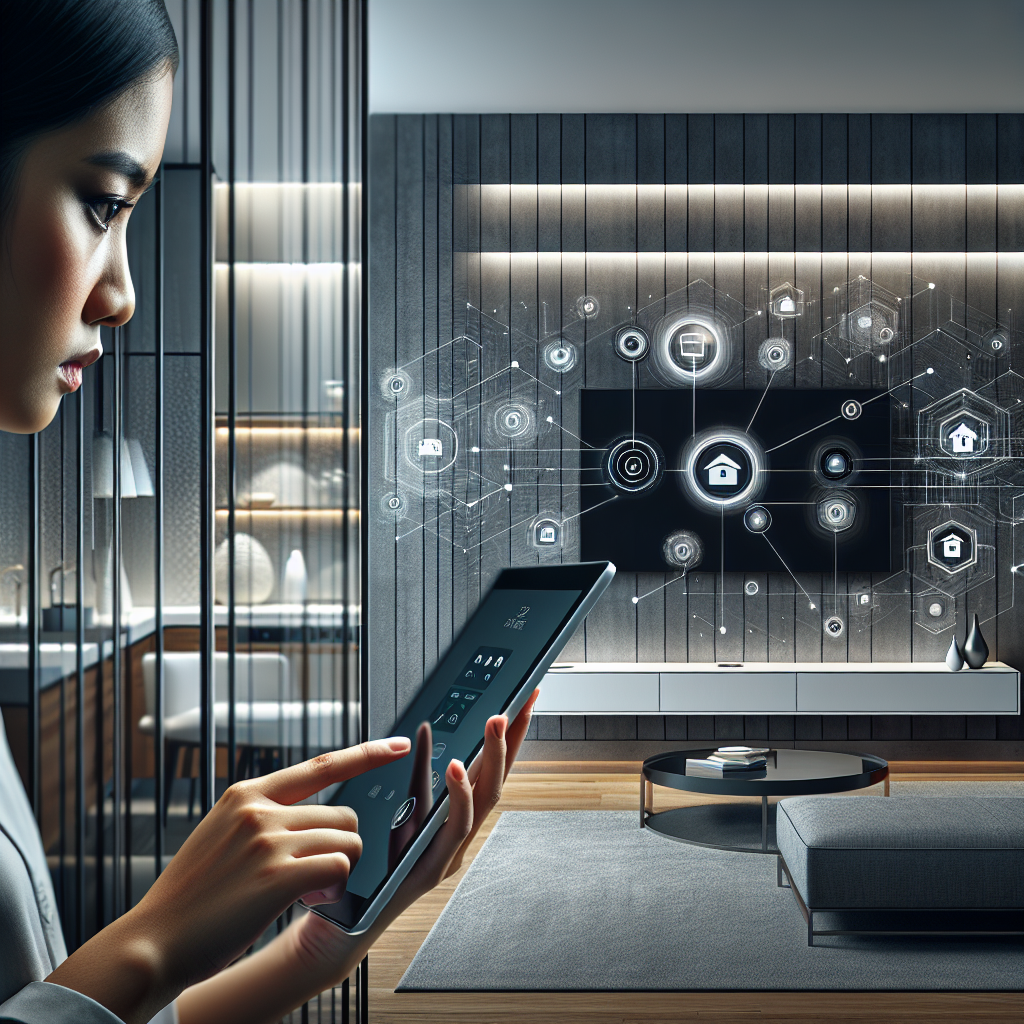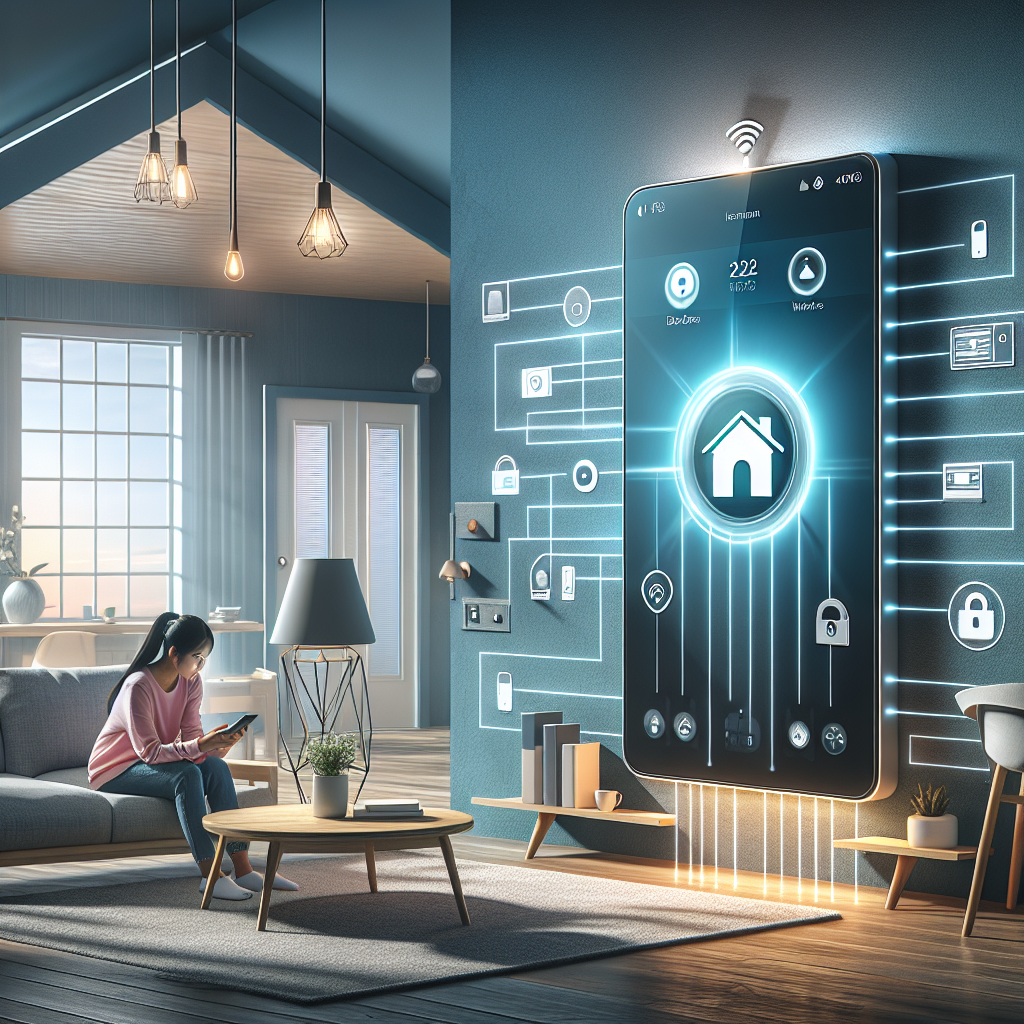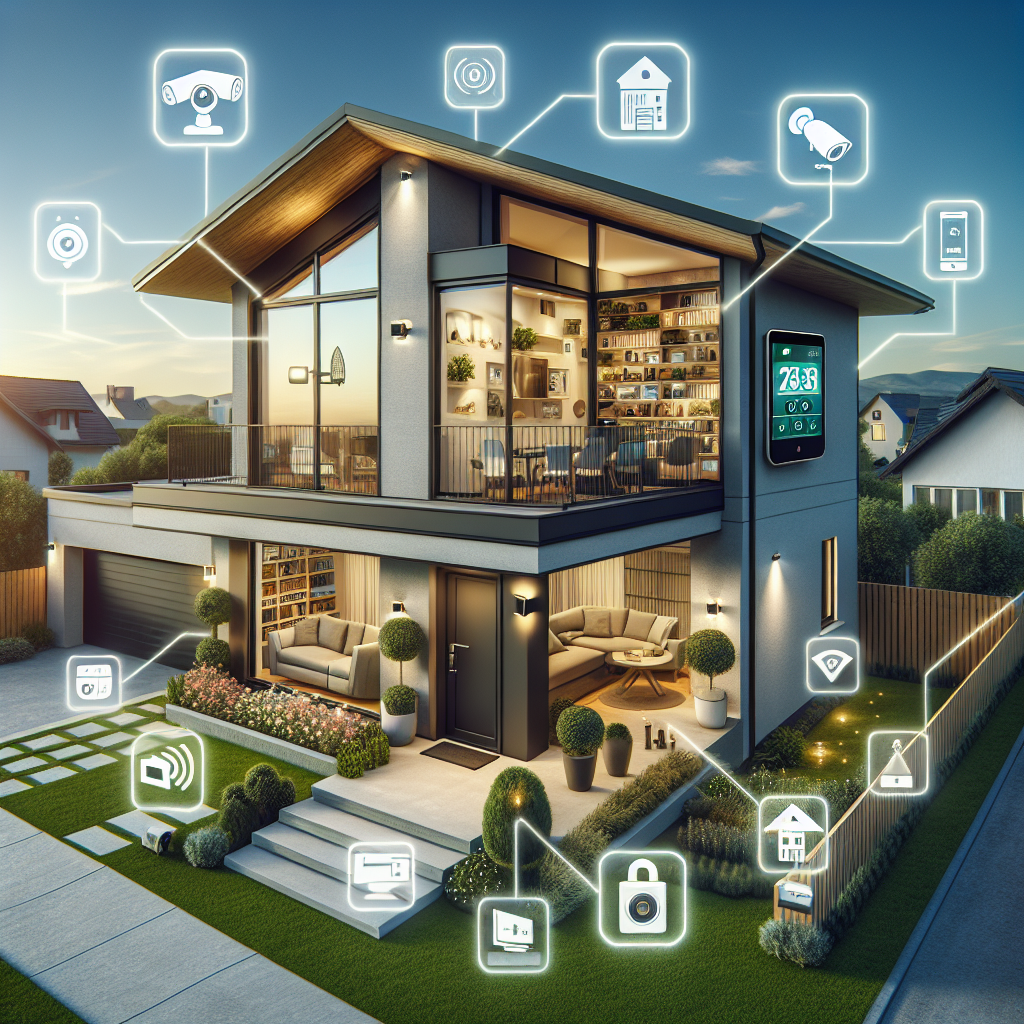In today’s fast-paced world, keeping our homes safe and secure is more important than ever. Thanks to advancements in technology, home surveillance has become easier and more effective than ever before. With smart technology, homeowners now have the ability to monitor their property from anywhere in the world, using their smartphones or tablets. Whether it’s keeping an eye on the kids while you’re at work, or ensuring your home is safe while you’re on vacation, smart home surveillance is the key to peace of mind. There’s no need to worry about break-ins or vandalism when you have the power of smart technology on your side.
Evolution of Home Surveillance Systems

Over the years, home surveillance systems have undergone a significant transformation from traditional methods to incorporating smart technology. The evolution of these systems has revolutionized the way homeowners monitor and protect their properties, offering enhanced features and convenience.
- Traditional surveillance methods vs. smart technology
In the past, traditional home surveillance systems primarily consisted of basic cameras connected to a monitor or recording device. These systems were often limited in functionality and required manual operation. With the advent of smart technology, homeowners can now access advanced features such as remote monitoring, motion detection, and real-time alerts through their smartphones or other connected devices.
- Advancements in smart home security systems
Smart home security systems have seen remarkable advancements in recent years, offering a wide range of innovative features to enhance surveillance capabilities. These systems may include high-definition cameras with night vision, two-way audio communication, and cloud storage for video footage. The integration of smart sensors and alarms further strengthens the security measures, providing comprehensive protection for the home.
- Integration of AI and IoT in surveillance
The integration of artificial intelligence (AI) and Internet of Things (IoT) technologies has propelled home surveillance systems to new heights. AI-powered algorithms enable smart cameras to distinguish between human activity and false alarms, reducing unnecessary notifications. IoT connectivity allows seamless integration with other smart devices in the home, creating a cohesive ecosystem that enhances security and convenience.
Understanding Smart Cameras
Features of Smart Cameras
Smart cameras are equipped with advanced capabilities that make them stand out in the realm of home surveillance technology. Here are some key features that set smart cameras apart:
-
High-definition video quality: Smart cameras offer crystal-clear video resolution, allowing homeowners to capture sharp and detailed footage of their property. This high-definition quality ensures that any suspicious activity or intrusions are captured with utmost clarity.
-
Motion detection capabilities: One of the most valuable features of smart cameras is their ability to detect motion. Using sophisticated algorithms, these cameras can differentiate between normal movements and potential threats, sending real-time alerts to homeowners when unusual activity is detected.
-
Two-way audio communication: Smart cameras often come equipped with built-in microphones and speakers, enabling two-way audio communication between homeowners and visitors. This feature allows homeowners to speak to delivery personnel, guests, or potential intruders directly through the camera’s app on their smartphone.
-
Night vision technology: To ensure round-the-clock surveillance, smart cameras are equipped with infrared LEDs that enable night vision capabilities. This means that even in low-light or pitch-dark conditions, smart cameras can capture clear and detailed footage, providing homeowners with peace of mind knowing that their property is being monitored at all times.
Benefits of Smart Cameras
-
Remote access and monitoring: Smart cameras allow homeowners to access live footage from their cameras remotely through a smartphone or computer. This feature enables individuals to check on their property in real-time, whether they are at work, on vacation, or simply away from home. This remote access provides peace of mind and the ability to monitor the security of the property at any time.
-
Real-time alerts and notifications: Smart cameras are equipped with motion sensors and advanced technology that can detect any unusual activity. When motion is detected, the cameras send instant alerts and notifications to the homeowner’s device, enabling them to respond promptly to any potential security threats or suspicious movements around their property.
-
Cloud storage for video footage: One of the key benefits of smart cameras is the option to store video footage in the cloud. This feature ensures that recorded videos are securely stored off-site, preventing them from being tampered with or deleted in the event of a break-in or vandalism. Cloud storage also allows homeowners to access recorded footage from anywhere, providing valuable evidence in case of any incidents.
-
Customizable settings for personalized security: Smart cameras offer customizable settings that cater to the specific security needs of homeowners. Users can adjust motion detection sensitivity, set up specific zones for monitoring, and schedule recording times according to their preferences. This customization allows for personalized security solutions that are tailored to the layout and requirements of each individual property.

Smart Sensors for Enhanced Security
Types of Smart Sensors
-
Door and window sensors
Door and window sensors are essential components of a smart home surveillance system. These sensors can detect when a door or window is opened or closed, providing real-time alerts to homeowners. By strategically placing these sensors on entry points, individuals can monitor any unauthorized access to their homes. This type of sensor is particularly useful for enhancing security and providing peace of mind. -
Motion sensors
Motion sensors are designed to detect movement within a specific area. When integrated into a smart surveillance system, these sensors can trigger alarms or notifications when unexpected motion is detected. This technology is invaluable for monitoring activity in and around the home, alerting homeowners to potential intruders or unusual behavior. Motion sensors can be customized to ignore pets or other non-threatening movements, ensuring accurate detection. -
Glass break sensors
Glass break sensors are specialized devices that can recognize the sound frequency of breaking glass. These sensors are highly effective in detecting attempted break-ins through windows or glass doors. By promptly identifying the unique sound pattern of shattered glass, these sensors can promptly alert homeowners and authorities to a potential security breach. Glass break sensors provide an additional layer of protection, especially in areas with vulnerable entry points. -
Environmental sensors (smoke, carbon monoxide)
Environmental sensors play a crucial role in home safety by monitoring air quality and detecting potentially harmful substances such as smoke and carbon monoxide. By integrating these sensors into a smart surveillance system, homeowners can receive immediate notifications in the event of a fire or gas leak. Early detection of these hazards can save lives and prevent property damage, making environmental sensors an essential component of comprehensive home surveillance with smart technology.
Applications of Smart Sensors
Enhanced Security
- Intrusion Detection and Prevention
-
Smart sensors play a crucial role in detecting unauthorized entry into homes. These sensors can be strategically placed at entry points such as doors and windows to detect any unusual activity. By using motion sensors, smart cameras, and door/window sensors, homeowners can receive real-time alerts on their smartphones when an intrusion is detected. This allows for immediate action to be taken, such as notifying authorities or activating alarms to deter intruders.
-
Monitoring Environmental Hazards
-
Smart sensors are equipped to detect various environmental hazards within a home, such as smoke, carbon monoxide, and water leaks. Smoke detectors can quickly identify the presence of smoke particles, triggering alarms and alerts to notify homeowners of potential fire hazards. Carbon monoxide sensors can monitor air quality and detect harmful gas levels, providing early warnings to prevent carbon monoxide poisoning. Water leak sensors can detect leaks in plumbing systems, alerting homeowners to potential water damage and mold growth. By integrating these sensors into a smart home surveillance system, homeowners can proactively address environmental hazards and ensure the safety of their property.
-
Integration with Smart Lighting and Alarms

- Smart sensors can be seamlessly integrated with other smart devices in a home, such as lighting systems and alarms, to enhance security measures. For instance, motion sensors can trigger smart lights to turn on when motion is detected, creating the illusion of occupancy to deter potential intruders. Additionally, smart sensors can synchronize with alarm systems to automatically sound alarms in the event of a security breach. By leveraging the interconnected capabilities of smart technology, homeowners can create a comprehensive surveillance system that not only detects threats but also responds effectively to mitigate risks.
The Role of Artificial Intelligence in Home Surveillance
AI-Powered Video Analytics
The Role of Artificial Intelligence in Home Surveillance
Artificial intelligence plays a crucial role in enhancing home surveillance systems through advanced video analytics capabilities. Leveraging AI technology enables smart cameras to analyze video feeds in real-time, providing homeowners with increased security and peace of mind.
-
Facial Recognition Technology: AI-powered video analytics can accurately identify individuals through facial recognition technology. This feature allows homeowners to receive alerts when unfamiliar faces are detected on their property, enhancing overall security measures.
-
Object Detection and Tracking: By utilizing AI algorithms, smart cameras can detect and track objects within their field of view. This capability enables homeowners to monitor movements of specific items or individuals, ensuring comprehensive surveillance coverage.
-
Behavior Analysis for Anomaly Detection: AI-powered video analytics can analyze behavioral patterns to detect anomalies or suspicious activities. By learning typical behaviors within a home environment, the system can alert homeowners to any deviations from the norm, prompting immediate action in response to potential security threats.
Benefits of AI Integration
-
Enhanced accuracy in threat detection: By utilizing advanced algorithms and machine learning, AI-powered surveillance systems can analyze patterns and behaviors to accurately identify potential threats. This can significantly reduce the chances of missing critical security issues and improve overall response times to security breaches.
-
Reduced false alarms: AI technology can distinguish between harmless movements, such as a pet wandering around the house, and actual security threats. This ability to filter out false alarms helps prevent unnecessary disruptions and ensures that homeowners are alerted only when there is a genuine cause for concern.
-
Predictive capabilities for proactive security measures: Through continuous learning and analysis of data, AI surveillance systems can predict potential security risks based on past incidents and patterns. This proactive approach allows homeowners to take preventive measures to mitigate security threats before they escalate, enhancing the overall safety and security of the property.
Network Connectivity and Data Privacy
Importance of Secure Networks
-
Protection Against Cyber Attacks: Secure networks are crucial for safeguarding home surveillance systems from cyber attacks. Encryption protocols such as WPA2 or WPA3 ensure that data transmitted between smart devices and the network remains confidential and protected from unauthorized access.
-
Prevention of Unauthorized Access: By setting up secure Wi-Fi networks with strong passwords, homeowners can prevent unauthorized individuals from gaining access to their surveillance cameras or other smart devices. This helps in maintaining the privacy and security of the home environment.
-
Mitigation of Data Breaches: Regular software updates for routers and smart devices are essential to patch any vulnerabilities that could be exploited by cybercriminals. These updates often include security enhancements that strengthen the network’s defense mechanisms against potential data breaches.
-
Enhanced Privacy: Secure networks provide homeowners with peace of mind knowing that their surveillance footage and personal information are less susceptible to being intercepted or compromised. This is especially important in this age of increasing digital threats and privacy concerns.
-
Compliance with Data Protection Regulations: In some regions, there are strict regulations regarding data protection and privacy. By ensuring the security of their home surveillance network, homeowners can maintain compliance with these regulations and avoid potential legal consequences associated with data breaches.
Safeguarding Personal Data
- Privacy settings for video storage
- Utilizing advanced security features such as end-to-end encryption to protect stored footage.
- Implementing multi-factor authentication to control access to video archives.
-
Regularly updating passwords and restricting sharing permissions to authorized users only.
-
Secure access controls for remote monitoring
- Setting up secure login credentials and unique user IDs for remote access.
- Employing biometric authentication or facial recognition for enhanced security.
-
Monitoring access logs and suspicious activities for immediate action.
-
Data encryption for cloud storage services
- Utilizing strong encryption protocols to secure data transmission and storage.
- Regularly updating encryption keys and certificates to prevent unauthorized access.
- Partnering with reputable cloud service providers with robust security measures in place.
Future Trends in Home Surveillance Technology
Advancements in Smart Home Integration
Future Trends in Home Surveillance Technology
Smart surveillance systems with voice control
Innovations in home surveillance technology now include smart surveillance systems equipped with voice control capabilities. These systems allow homeowners to easily control their surveillance cameras and monitoring devices using voice commands. By simply speaking to the smart system, users can activate or deactivate cameras, adjust settings, and even receive real-time alerts based on specific voice prompts. This hands-free approach to home surveillance enhances convenience and accessibility for users, making monitoring their properties more seamless and efficient.
Integration with smart assistants for seamless monitoring
Another significant advancement in home surveillance technology is the integration of surveillance systems with smart assistants. By connecting surveillance cameras and monitoring devices to popular smart assistants like Amazon Alexa or Google Assistant, homeowners can enjoy a more integrated and streamlined monitoring experience. This integration enables users to access live camera feeds, receive alerts, and control surveillance settings using voice commands through their smart assistant devices. The seamless connectivity between smart home surveillance systems and smart assistants enhances the overall functionality and accessibility of home monitoring, providing users with greater peace of mind and control over their security measures.
Emerging Technologies in Surveillance
- 360-degree cameras for comprehensive coverage
360-degree cameras are revolutionizing the field of home surveillance by providing a complete view of the surroundings without any blind spots. These cameras use multiple lenses to capture footage from all angles simultaneously, ensuring that no area is left unmonitored. This technology allows homeowners to have a more comprehensive understanding of their property’s security, enhancing overall safety and peace of mind.
- AI algorithms for predictive analysis and threat prevention
Artificial intelligence (AI) algorithms are being increasingly integrated into home surveillance systems to analyze data and detect potential threats before they escalate. By utilizing machine learning capabilities, these algorithms can differentiate between normal and suspicious activities, such as unauthorized entry or unusual movement patterns. This proactive approach enables homeowners to take preemptive measures to prevent security breaches and protect their property effectively.
FAQs: Home Surveillance with Smart Technology
What is home surveillance with smart technology?
Home surveillance with smart technology refers to using devices such as smart cameras, sensors, and connected systems to monitor and protect your home. These devices can be controlled remotely through a smartphone or computer, allowing you to keep an eye on your home from anywhere.
How does home surveillance with smart technology work?
Smart surveillance devices use Wi-Fi or cellular connections to communicate with a central control system, such as a smartphone app or a dedicated hub. The devices can be programmed to send alerts when motion is detected, doors are opened, or other defined events occur. Users can also access live video feeds and recordings through the control system.
What are the benefits of home surveillance with smart technology?
One of the main benefits of home surveillance with smart technology is increased security and peace of mind. Being able to monitor your home remotely can help deter burglars and alert you to potential threats in real time. Smart surveillance systems can also provide valuable evidence in the event of a break-in or other incident.
Are there any privacy concerns with home surveillance technology?
Privacy concerns can arise with any type of surveillance technology, including smart home systems. It is important to carefully consider where cameras and sensors are placed to avoid capturing private areas or sensitive information. Additionally, it is crucial to secure the network and control systems to prevent unauthorized access to the surveillance feed.
How can I get started with home surveillance using smart technology?
To get started with home surveillance using smart technology, you can research and purchase devices such as smart cameras, motion sensors, and doorbell cameras. These devices can typically be easily installed and connected to an existing Wi-Fi network. You can then set up alerts and access controls through a smartphone app or dedicated hub to start monitoring your home.